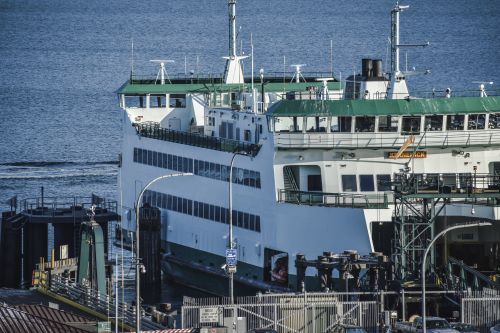 The Interislander ferry Kaitaki is again in the news after ferry passengers were forced to spend the night on board in Wellington harbour after the ferry developed issues with its steering just outside the Wellington heads.
The Interislander ferry Kaitaki is again in the news after ferry passengers were forced to spend the night on board in Wellington harbour after the ferry developed issues with its steering just outside the Wellington heads.
Last year the complete failure of the Kaitaki’s engines caused it to drift dangerously close to rocks near Wellington harbour. According to the Transport Accident Investigation Commission’s report it was caused in part by KiwiRail's failure to replace safety-critical parts, which were years past their use-by dates.
Inevitably, the Kaitaki drama drew comparisons with the Wahine disaster of 1968 when that ferry capsized just inside Wellington harbour, with the loss of more than 50 lives, during one of the most severe storms to batter the city.
In 2006 the Wellington Regional Council received a Navigational Risk Assessment report that rated a ferry grounding at or near the harbour entrance as the top likely risk. The assessment raised concerns "given the rapidly changing weather conditions at Wellington” about the adequacy of the tug fleet of the time, and influenced the decision to replace the 1970s tug fleet.
Earlier this year the container ship MV Shiling lost power after leaving Wellington harbour. This again raised concerns that the present tugs are not equipped to tow to safety larger vessels.
The 2009 sinking of the Tongan inter-island ferry MV Princess Ashika resulted in 74 deaths and 54 people being rescued. The inquiry concluded that the disaster "was a result of systemic and individual failures". It said that "The tragedy is that they were all easily preventable and the deaths were completely senseless." Four men charged were found guilty on charges in relation to the disaster. The company was also convicted.
At the core of New Zealand’s Health and Safety at Work Act is the requirement that all duty holders, so far as reasonably practicable, eliminate risks to health and safety. Risks that cannot be eliminated must be minimised. A business has a primary duty of care to ensure, as far as reasonably practicable, the safety and health of its workers and that others are not put at risk by the work carried out as part of the business. It must further ensure that there is, amongst other matters, safe plant (such as a ship) and that there are safe systems of work (such as replacing safety critical parts by their used-by dates).
What is “reasonably practicable” involves assessing the likelihood of the risk occurring, the degree of harm that might result, what the business knows (or ought to reasonably know) about the risk and the availability and suitability of ways to eliminate or minimise the risk. An assessment is also done to consider whether the extent of the risk and the cost of available ways of eliminating or minimising the risk is grossly disproportionate to the risk.
Clearly the risk of harm is very high in the Cook Strait. A severe storm, or a failure of a ship, could result in drownings.
The Pike River disaster resulted in 29 deaths. WorkSafe, the Crown agency charged with upholding New Zealand’s health and safety laws, received criticism over its handling of the prosecution in relation to the Pike River disaster. WorkSafe initially laid 12 health and safety charges against Pike River boss, Peter Whittall, but they were dropped after more than $3 million was paid to the victims' families. Eventually the Supreme Court ruled that WorkSafe’s decision to offer no evidence was "an unlawful agreement to stifle prosecution".
Our most recent national disaster is Whakaari/White Island. Twenty-two people died from extreme burns and blast injuries when Whakaari erupted in 2019, and many of the 25 survivors were seriously injured. WorkSafe has prosecuted a number of parties in relation to the disaster. A number of the parties have already pleaded guilty. The trial is continuing for other parties at present.
Again, WorkSafe is not without criticism in this. The Ministry of Business, Innovation and Employment (WorkSafe sits under its umbrella) commissioned an independent review that found that it knew that unregistered operators were taking tourists onto the island for five years leading up to the eruption and did nothing about it. More alarmingly, WorkSafe’s safety audits of registered operators did not assess volcanic risk, only walking hazards.
The Kaitaki has been the focus of recent attention and surely there must be some serious discussions being had on the safety of the passengers and crew on board that vessel. But the Interislander is not the only ferry company operating out of Wellington. Bluebridge has also had a share of problems recently. There are also multiple agencies that have some control over our ferry services. New Zealand obviously needs a sea link between its main islands. Clearly we cannot eliminate the risk of running the service, but given the risks, the oversight of those responsible should sit heavily on their shoulders. Read more....

